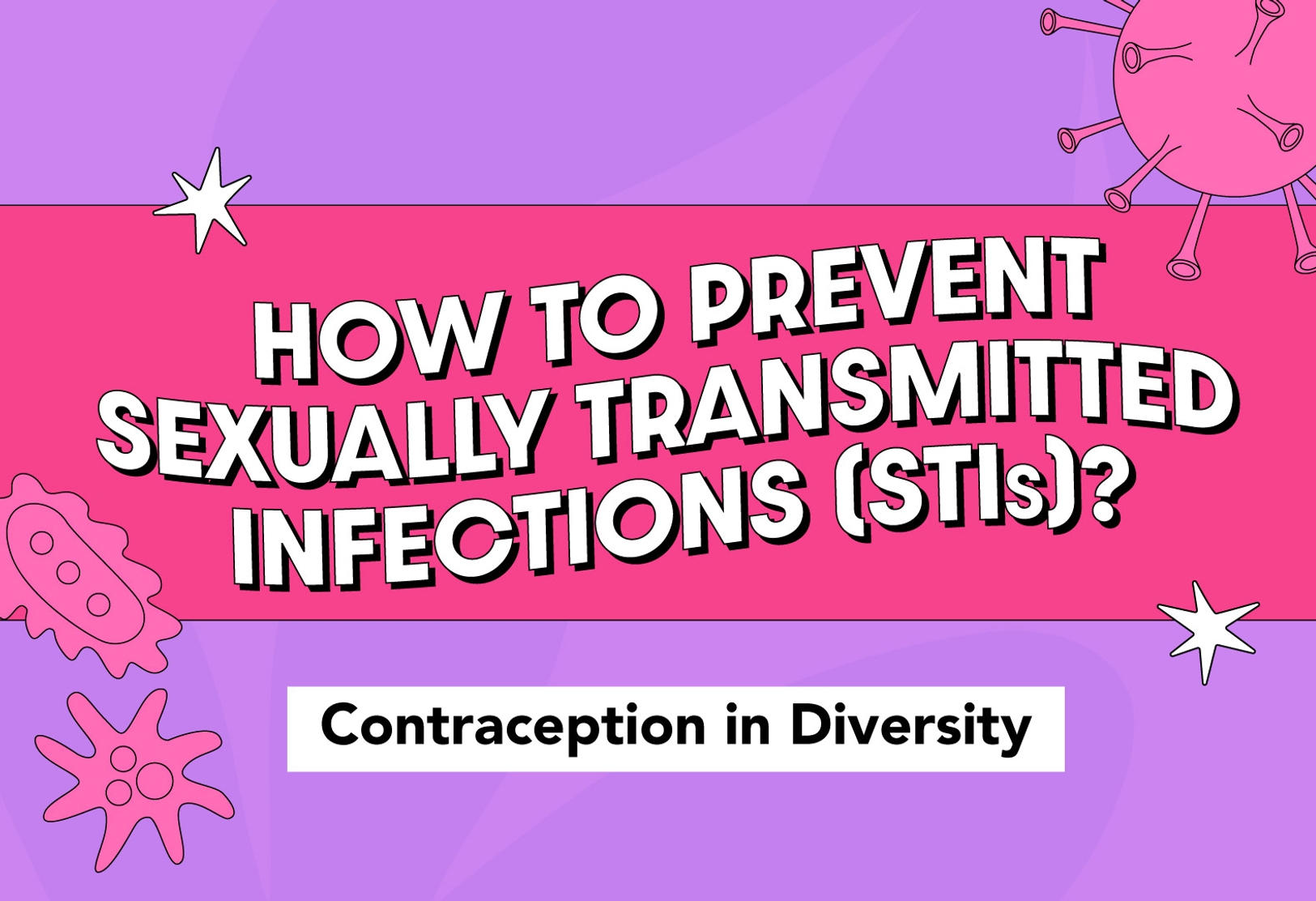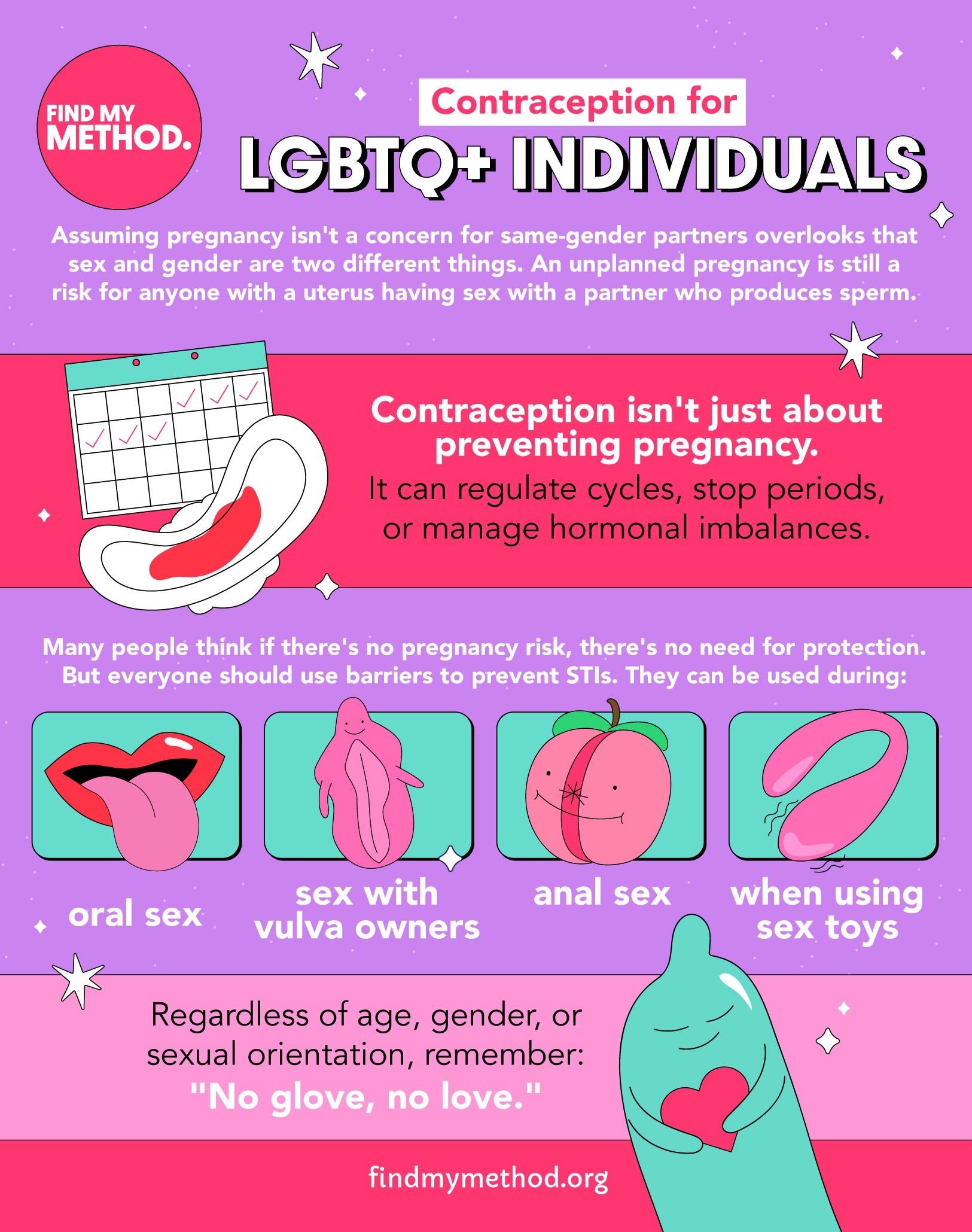A common misconception is that there is no need for protection between queer couples, as there is no risk of pregnancy. The truth is, even if pregnancy isn’t a concern, sexually transmitted infections (STIs) remain a risk. Whether you’re part of the LGBTIQ+ community or have undergone sterilization, it’s crucial to consider using barrier methods like condoms, which are essential—and often the only option—to prevent infections. You may be wondering, how to prevent sexually transmitted infections?
When to Use Condoms?
Many believe external and internal condoms are only for heterosexual penetrative sex. However, there are lots of ways to use a barrier method. These are the sexual practices where using condoms is recommended:
Between People with Vulvas
Internal condoms are an option for those with female genitals. They’re placed inside the vagina and partially cover the vulva. Unfortunately, sometimes, this method is not as easy to find as the external condoms.
Oral Sex
Mouth-to-genital or mouth-to-anus contact can spread STIs. How to prevent sexually transmitted infections in oral sex? For oral sex on the vulva or anus, you can cut an external condom vertically to create a latex sheet. Place it over the area to be licked and enjoy worry-free. Pro tip: Use a flavored condom!
Anal Sex
Both internal and external condoms work for anal sex. Unprotected anal penetration not only risks STI transmission but also can lead to serious infections from bacteria in the anus contacting the urethra. Always use protection and lubricant!
Sex Toys
Covering sex toys with a condom reduces the risk of infection when sharing them. Sex toys are made from body-safe materials, but proper cleaning and care are essential. Using condoms on toys helps prevent infections.
In conclusion, condoms are not only for preventing pregnancy but also for preventing infections. They come in different sizes, types, and materials. There’s something for everyone!
Regardless of your age, gender, or sexual orientation, remember: no glove, no love.
References:
- Métodos Anticonceptivos en la diversidad https://findmymethod.org/es/blog/avoid-sexual-infections-diseases
- LGBTQ: Contraception https://youngwomenshealth.org/guides/lgbtq-contraception/
- Why queer, bisexual, and pansexual people use birth control https://helloclue.com/articles/sex/why-queer-bisexual-and-pansexual-people-use-birth-control
- Contraceptive Care Disparities Among Sexual Orientation Identity and Racial/Ethnic Subgroups of U.S. Women: A National Probability Sample Study https://www.ncbi.nlm.nih.gov/pmc/articles/PMC8590146/
About the author:
Find My Method is a social organization that shines a spotlight on sexual and reproductive rights and is dedicated to sharing honest information on contraceptive methods across the globe.
Our online global community offers a safe space to connect and converse about sexuality and reproduction within the context of each person’s region and culture.
Do you have something to share? Contact us on our social media platforms: Facebook, Instagram, Twitter, YouTube and TikTok, or send us an email to info@findmymethod.org. For more information on contraception, visit findmymethod.org.



